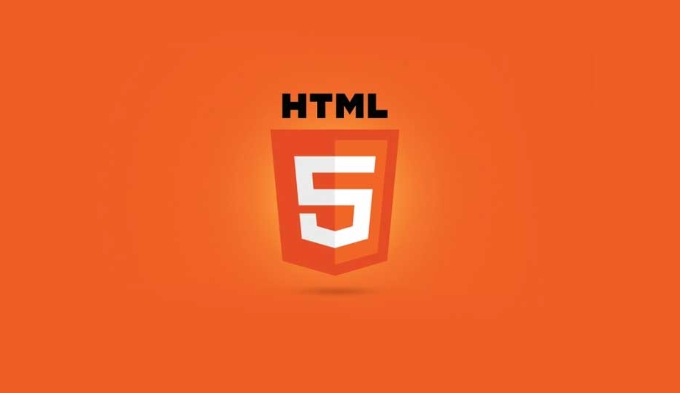SVG is an XML-based vector graphics format, recommended because it is clear and not distorted, supports CSS and JavaScript operations, and has small file size. 1. You can directly embed SVG code in HTML, and quickly load and style control can be achieved through

Embedding vector graphics with HTML5's <svg></svg> tag is a very practical approach in modern web development. SVG (scalable vector graphics) not only maintains clear picture quality, but also directly controls styles and animations through code, making it ideal for responsive design and interactive needs.

What is SVG? Why is it recommended to use?
SVG is an XML-based image format designed to describe two-dimensional vector graphics. Unlike bitmaps like PNG or JPEG, SVG images will not be distorted when enlarged, which is especially suitable for scenes that require high-definition display, such as icons, charts, maps, etc.

Compared with traditional image formats, SVG has obvious advantages:
- Can be opened and modified with a text editor
- Supports CSS and JavaScript operations to facilitate dynamic effects
- File size is usually smaller, especially suitable for simple graphics
How to embed SVG directly in HTML
The most direct way is to write the SVG code into the HTML page and use the <svg></svg> tag to wrap the content. The advantage of this method is that it loads quickly, does not require additional resource requests, and can directly control the style with CSS.

For example:
<svg width="100" style="max-width:90%" xmlns="http://www.w3.org/2000/svg"> <circle cx="50" cy="50" r="40" stroke="black" stroke-width="3" fill="red" /> </svg>
This code draws a red circle on the page with a black border. You can put it directly anywhere in HTML, just like inserting a normal tag.
What should be noted is:
- Make sure the namespace
xmlnsis declared correctly - Try to avoid redundant code exported from graphics software and be appropriately streamlined
- Use CSS class names to control styles instead of inline style attributes for easy unified management
How to reference external SVG files
If the SVG graphics are complex or need to be reused multiple times, you can save it as a separate .svg file and then introduce it through <img alt="Embedding vector graphics using the HTML5 SVG tag." > , <object> , or CSS background image, etc.
Common methods include:
- Using
<img alt="Embedding vector graphics using the HTML5 SVG tag." >tags : The easiest, but not modifying internal elements through CSS or JS - Use
<object>tag : supports interaction and scripting, suitable for scenarios where SVG content needs to be manipulated - Embed CSS as background image : suitable for decorative graphics, the advantage is that it can be managed with other styles
For example:
<object type="image/svg xml" data="icon.svg">Your browser does not support SVGs</object>
Which method to choose depends on your specific needs. If you just display static graphics, it is most convenient to use <img alt="Embedding vector graphics using the HTML5 SVG tag." > ; if you need to do animation or interaction, it is recommended to use <object> or directly embed the code.
FAQs and Optimization Suggestions
Although SVG is very powerful, there are some common "pits" that need attention:
- Support for certain SVG features varies slightly in different browsers, especially older versions
- Exported SVG files may contain unnecessary metadata, and it is recommended to use tools to clean them.
- If you need to be compatible with IE browser, you need to test whether the rendering is normal
Optimization suggestions include:
- Use tools such as SVGO to compress SVG files
- For icon-like graphics, consider using icon font or SVG sprite to improve performance
- Unified color value format (such as all use hexadecimal system) to improve maintenance efficiency
Basically that's it. The learning curve of SVG is not steep, but mastering the details can improve the front-end experience a lot.
The above is the detailed content of Embedding vector graphics using the HTML5 SVG tag.. For more information, please follow other related articles on the PHP Chinese website!

Hot AI Tools

Undress AI Tool
Undress images for free

Undresser.AI Undress
AI-powered app for creating realistic nude photos

AI Clothes Remover
Online AI tool for removing clothes from photos.

Clothoff.io
AI clothes remover

Video Face Swap
Swap faces in any video effortlessly with our completely free AI face swap tool!

Hot Article

Hot Tools

Notepad++7.3.1
Easy-to-use and free code editor

SublimeText3 Chinese version
Chinese version, very easy to use

Zend Studio 13.0.1
Powerful PHP integrated development environment

Dreamweaver CS6
Visual web development tools

SublimeText3 Mac version
God-level code editing software (SublimeText3)
 Using ARIA attributes with HTML5 semantic elements for accessibility
Jul 07, 2025 am 02:54 AM
Using ARIA attributes with HTML5 semantic elements for accessibility
Jul 07, 2025 am 02:54 AM
The reason why ARIA and HTML5 semantic tags are needed is that although HTML5 semantic elements have accessibility meanings, ARIA can supplement semantics and enhance auxiliary technology recognition capabilities. For example, when legacy browsers lack support, components without native tags (such as modal boxes), and state updates need to be dynamically updated, ARIA provides finer granular control. HTML5 elements such as nav, main, aside correspond to ARIArole by default, and do not need to be added manually unless the default behavior needs to be overridden. The situations where ARIA should be added include: 1. Supplement the missing status information, such as using aria-expanded to represent the button expansion/collapse status; 2. Add semantic roles to non-semantic tags, such as using div role to implement tabs and match them
 Integrating CSS and JavaScript effectively with HTML5 structure.
Jul 12, 2025 am 03:01 AM
Integrating CSS and JavaScript effectively with HTML5 structure.
Jul 12, 2025 am 03:01 AM
HTML5, CSS and JavaScript should be efficiently combined with semantic tags, reasonable loading order and decoupling design. 1. Use HTML5 semantic tags, such as improving structural clarity and maintainability, which is conducive to SEO and barrier-free access; 2. CSS should be placed in, use external files and split by module to avoid inline styles and delayed loading problems; 3. JavaScript is recommended to be introduced in front, and use defer or async to load asynchronously to avoid blocking rendering; 4. Reduce strong dependence between the three, drive behavior through data-* attributes and class name control status, and improve collaboration efficiency through unified naming specifications. These methods can effectively optimize page performance and collaborate with teams.
 HTML5 video not playing in Chrome
Jul 10, 2025 am 11:20 AM
HTML5 video not playing in Chrome
Jul 10, 2025 am 11:20 AM
Common reasons why HTML5 videos don't play in Chrome include format compatibility, autoplay policy, path or MIME type errors, and browser extension interference. 1. Videos should be given priority to using MP4 (H.264) format, or provide multiple tags to adapt to different browsers; 2. Automatic playback requires adding muted attributes or triggering .play() with JavaScript after user interaction; 3. Check whether the file path is correct and ensure that the server is configured with the correct MIME type. Local testing is recommended to use a development server; 4. Ad blocking plug-in or privacy mode may prevent loading, so you can try to disable the plug-in, replace the traceless window or update the browser version to solve the problem.
 Embedding video content using the HTML5 `` tag.
Jul 07, 2025 am 02:47 AM
Embedding video content using the HTML5 `` tag.
Jul 07, 2025 am 02:47 AM
Embed web videos using HTML5 tags, supports multi-format compatibility, custom controls and responsive design. 1. Basic usage: add tags and set src and controls attributes to realize playback functions; 2. Support multi-formats: introduce different formats such as MP4, WebM, Ogg, etc. through tags to improve browser compatibility; 3. Custom appearance and behavior: hide default controls and implement style adjustment and interactive logic through CSS and JavaScript; 4. Pay attention to details: Set muted and autoplay to achieve automatic playback, use preload to control loading strategies, combine width and max-width to achieve responsive layout, and use add subtitles to enhance accessibility.
 Using HTML5 Semantic Elements for Page Structure
Jul 07, 2025 am 02:53 AM
Using HTML5 Semantic Elements for Page Structure
Jul 07, 2025 am 02:53 AM
Using HTML5 semantic tags can improve web structure clarity, accessibility and SEO effects. 1. Semantic tags such as,,,, and make it easier for the machine to understand the page content; 2. Each tag has a clear purpose: used in the top area, wrap navigation links, include core content, display independent articles, group relevant content, place sidebars, and display bottom information; 3. Avoid abuse when using it, ensure that only one per page, avoid excessive nesting, reasonable use and in blocks. Mastering these key points can make the web page structure more standardized and practical.
 Explaining the HTML5 `` vs `` elements.
Jul 12, 2025 am 03:09 AM
Explaining the HTML5 `` vs `` elements.
Jul 12, 2025 am 03:09 AM
It is a block-level element, suitable for layout; it is an inline element, suitable for wrapping text content. 1. Exclusively occupy a line, width, height and margins can be set, which are often used in structural layout; 2. No line breaks, the size is determined by the content, and is suitable for local text styles or dynamic operations; 3. When choosing, it should be judged based on whether the content needs independent space; 4. It cannot be nested and is not suitable for layout; 5. Priority is given to the use of semantic labels to improve structural clarity and accessibility.
 Accessing User Location with HTML5 Geolocation API
Jul 07, 2025 am 02:49 AM
Accessing User Location with HTML5 Geolocation API
Jul 07, 2025 am 02:49 AM
To obtain user location information, you must first obtain authorization. When using HTML5's GeolocationAPI, the first step is to request user permission. If the user refuses or fails to respond, an error should be handled and a prompt should be given; after successful authorization, the Position object includes coords (latitude, longitude, etc.) and timestamp; you can use watchPosition to monitor location changes, but you need to pay attention to performance issues and clear the listener in time. 1. Authorization requires the user to explicitly allow it to trigger the getCurrentPosition method request; 2. Process error.code when rejected or errored and prompt the user; 3. After success, position.coords provides location data; 4.watc
 Saving the content of an HTML5 canvas as an image.
Jul 08, 2025 am 02:13 AM
Saving the content of an HTML5 canvas as an image.
Jul 08, 2025 am 02:13 AM
Yes, you can save its contents as an image using the HTML5Canvas built-in toDataURL() method. First, call canvas.toDataURL ('image/png') to convert the canvas content to a base64 string in PNG format; if JPEG or WebP format is required, the corresponding type and quality parameters such as canvas.toDataURL ('image/jpeg', 0.8) can be passed in. Then you can achieve download by creating a dynamic link and triggering a click event: 1. Create an element a; 2. Set the download attribute and href as image data; 3. Call the click() method. Note that this operation should be triggered by user interaction.






